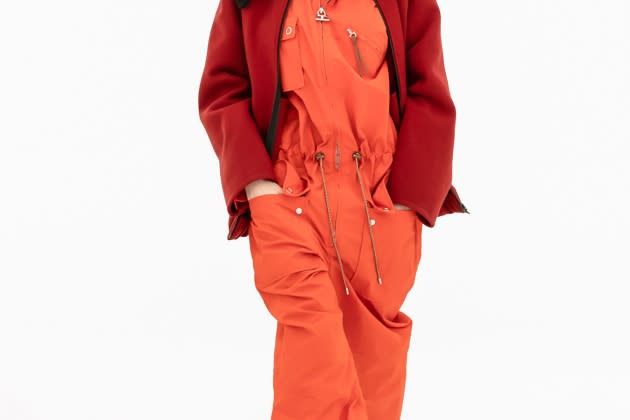Salvatore Ferragamo in Transitional Phase, Says CEO

MILAN — Salvatore Ferragamo is in a transitional phase and 2022 was a building year in which the company started its strategic refocusing, said chief executive officer and general manager Marco Gobbetti during a call with analysts on Thursday, as he reported a 4 percent decrease in group revenues in the first quarter.
In the three months ended March 31, sales amounted to 278 million euros, compared with 289.4 million euros in the same period last year. At constant exchange rates, revenues were down 6.5 percent.
More from WWD
“In 2023 we started the progressive deployment of our new product offer and the first products designed by our new creative director, Maximilian Davis, arrived in our stores in February, so the limited quantities of new products are not yet sufficient to positively impact the trading in this phase of the transition,” said Gobbetti.
“While the new offering today represents a small portion of the overall intended collection, it is an important step in the execution of our strategy and we are pleased by the early results,” said Gobbetti. “It will not be until later this year that we will start to see the fuller appreciation of the more complete new offer.”
He also touted the “positive resonance and visibility of our initial communication efforts. We continue to invest in our business and make the critical choices to rationalize and elevate our wholesale channel. We are conscious of the work ahead of us, remain confident in our plans and confirm our midterm ambition.”
In the quarter, retail sales decreased 2.3 percent to 191 million euros, representing 68.7 percent of the total, mainly penalized by a softening U.S. market, while Europe, the Middle East and Africa region reported a positive performance. China progressively improved, also into April, with Mainland Chinese customers also driving the recovery in Hong Kong.
The wholesale channel registered a sales decrease of 13.9 percent to 81 million euros due to the planned rationalization of the network of third parties, mainly in the U.S., and the delayed recovery of travel retail in Asia Pacific.
Sales in the Europe, Middle East and Africa region rose 24.7 percent to 71.8 million euros, representing 26.4 percent of the total.
Revenues in Asia Pacific decreased 13.6 percent to 90.7 million euros, accounting for 33.4 percent of the total, penalized by the travel retail channel, while the performance of retail in Greater China was positive.
Sales in Japan fell 7.1 percent to 23.7 million euros.
Revenues in North America dropped 19.8 percent to 67.3 million euros, accounting for 24.8 percent of the total, with the wholesale channel underperforming more than proportionally as a consequence of the network rationalization.
“The U.S. is at the peak of the transformation, but we have had a very good response to new collections in America,” said Gobbetti, trumpeting “a qualitative improvement, adding a number of important multibrands and departments stores that will be important supporters and tools of visibility.”
He admitted the region’s environment was softening and that it was difficult to predict if this would be short-lived.
Sales in Central and South America rose 5.4 percent to 18.2 million euros.
By categories, sales of shoes amounted to 124.8 million euros, inching down 0.4 percent compared with 125.3 million euros in the same period last year, and representing almost 46 percent of revenues.
Leather goods fell 14.8 percent to 107.6 million euros, accounting for almost 40 percent of sales. Gobbetti underscored that Ferragamo is “building a new architecture of bags,” and urged analysts to “not dig too deeply” in the categories, impacted by “many different facts and effects.”
Apparel rose 8.6 percent to 19.3 million euros.
Asked about the current “quiet luxury” trend, Gobbetti said he felt Ferragamo was “very well positioned, starting with Davis’ collection in September, which anticipated this trend, very elegant, understated and with very little logo, with classic inspiration in the context of modernity.”
Best of WWD
